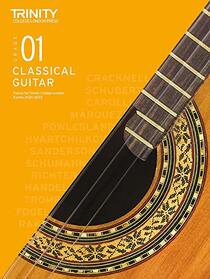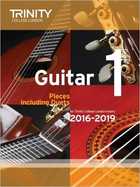Grade 1
|
Musical Knowledge
These questions test the candidate’s understanding of their chosen pieces, the context of their performance and their knowledge of their instrument and its technical demands, including best practice for rehearsal and performance. Five questions, each worth 2 marks, will normally be asked. Questions will include discussions on most of the areas mentioned below, but not all parameters will be relevant to all disciplines and pieces, and examiners will select questions as appropriate. Grade 1
|
Grade 1 pieces tutor performances
|
Lotus Flower (slow) Sanderson
Pirate's Delight (slow) Fogel
Chansonette (slow) Fogel
|
Lotus Flower Sanderson
Pirate's Delight Fogel
Chansonette (fast) Fogel
|
Grade 1 technical exercise, scales and arpeggios
Grade 1 tutor performances - previous syllabus 2016-19
|
James Bond Theme -
Monty Norman, arr. Nicholas Powlesland (Group B, slow) |
James Bond Theme -
Monty Norman, arr. Nicholas Powlesland (Group B) |
James Bond Theme - interesting information
Key: E minor (1 sharp - F# in key signature). The piece is composed with the notes of the E minor scale
Time Signature: 4/4 time. (4 crotchet beats per bar)
Style: Thriller music, tense, dramatic
Features: 1) chromatic scalic theme (in semitones) 2) rolled chords (also called arpeggiated chords)
3) Pauses (shown by fermata or pause symbols) 4) swung quavers and straight quavers
Key: E minor (1 sharp - F# in key signature). The piece is composed with the notes of the E minor scale
Time Signature: 4/4 time. (4 crotchet beats per bar)
Style: Thriller music, tense, dramatic
Features: 1) chromatic scalic theme (in semitones) 2) rolled chords (also called arpeggiated chords)
3) Pauses (shown by fermata or pause symbols) 4) swung quavers and straight quavers
James Bond Theme - Monty Norman
Mona Lisa by Lee Sollory (group B)
Mona Lisa by Lee Sollory - interesting information
Key: A minor (no key signature) [or more accurately, modal]. The piece is composed with the notes of the A minor scale [or Dorian mode]
Time Signature: 3/4 time. (3 crotchet beats per bar)
Style: Impressionistic, calm, floating. could be influenced by Eric Satie’s Gymnopédies
Features: 1) rolled chords (also called arpeggiated chords). 2) Harmonic (Harm. 12). 3) Pauses (shown by fermata or pause symbols).
4) rit. - slow down 5) a tempo. - return to original tempo
Key: A minor (no key signature) [or more accurately, modal]. The piece is composed with the notes of the A minor scale [or Dorian mode]
Time Signature: 3/4 time. (3 crotchet beats per bar)
Style: Impressionistic, calm, floating. could be influenced by Eric Satie’s Gymnopédies
Features: 1) rolled chords (also called arpeggiated chords). 2) Harmonic (Harm. 12). 3) Pauses (shown by fermata or pause symbols).
4) rit. - slow down 5) a tempo. - return to original tempo
|
Gymnopédie No. 1 by Erik Satie
|
Gymnopédie No. 1 by Erik Satie
|
|
|
|
|
Inès -
Traditional Song from Northern Spain, arr. Lee Sollory (group A, slow) |
Inès -
Traditional Song from Northern Spain, arr. Lee Sollory (group A) |
|
|
|
Inès- interesting information
Key: A minor (no key signature). The piece is composed with the notes of the A minor scale
Time Signature: 2/4 time. (2 crotchet beats per bar)
Style: Spanish Song, dramatic, expressive
Features: 1) rolled chords (also called arpeggiated chords). 2) rit. molto - slow down a lot. 3) poco rit.- slow down a little.
4) a tempo. - return to original tempo
Key: A minor (no key signature). The piece is composed with the notes of the A minor scale
Time Signature: 2/4 time. (2 crotchet beats per bar)
Style: Spanish Song, dramatic, expressive
Features: 1) rolled chords (also called arpeggiated chords). 2) rit. molto - slow down a lot. 3) poco rit.- slow down a little.
4) a tempo. - return to original tempo
|
Balletto (17th Century Italian) Anonymous (group A, slow)
|
Balletto (17th Century Italian) Anonymous (group A)
|
|
|
|
Balletto- interesting information
Key: D major. Time Signature: 4/4 (4 crotchet beats in a bar).
Key: D major. Time Signature: 4/4 (4 crotchet beats in a bar).
Grade 1 - technical exercise, scales and arpeggios

